What a Difference a Year Makes
Laid down at Newport News on the 1st anniversary of the attack on Pearl Harbor, 7 December 1942, CV-13 officially earned her name some 80 years ago today on 14 October 1943.
The future USS Franklin (CV-13) at launch was sponsored by the indomitable LCDR Mildred A. McAfee, USNR (Vassar 1920), then-director of the Women Accepted for Volunteer Emergency Service, better known as the WAVES, and she smashed the bottle in full uniform, as shown in the below photo of the event.
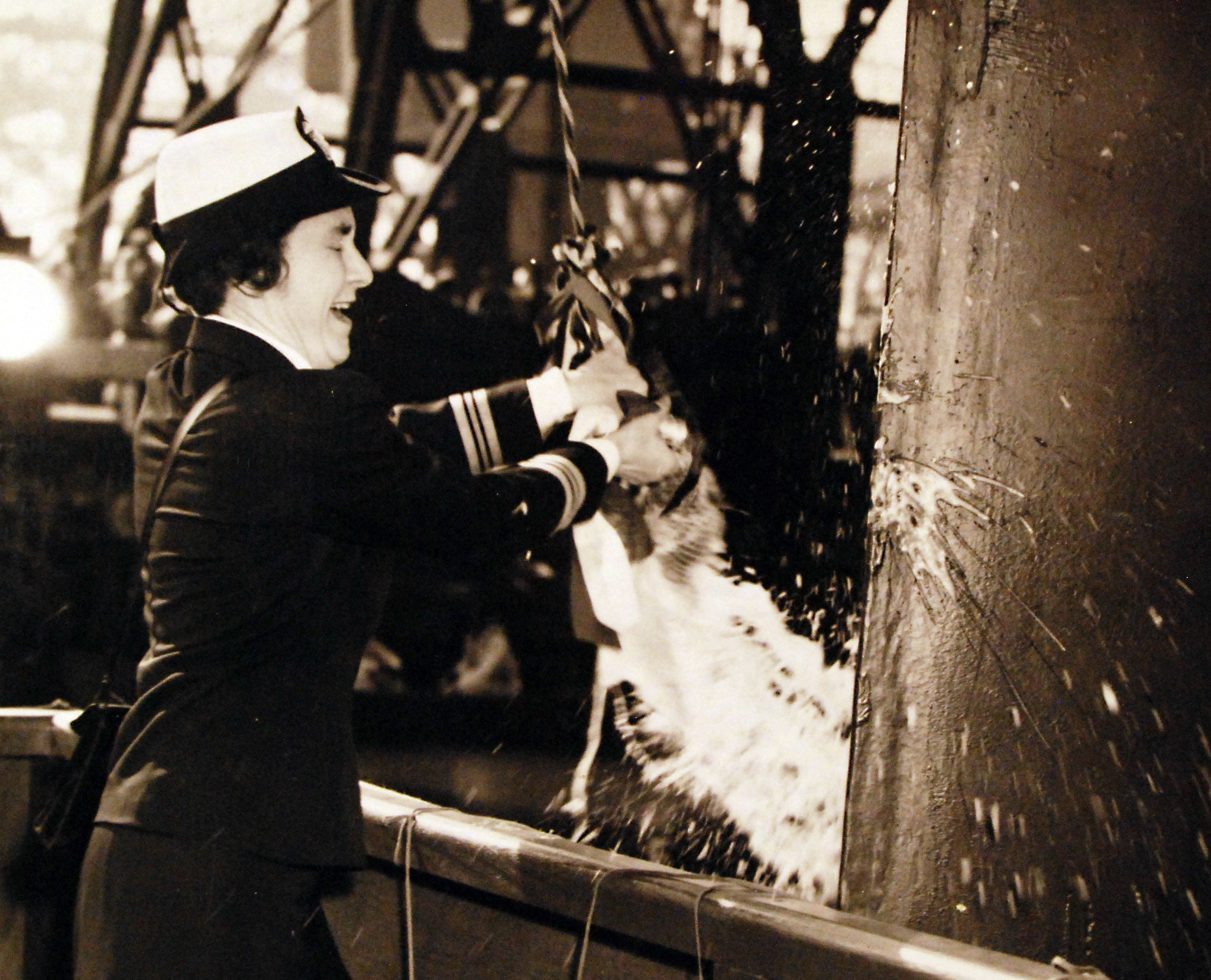
Lieutenant Commander Mildred H. McAfee, USNR, Director of the Women’s Reserve, christens USS Franklin (CV 13) at its launching at the Newport News Shipbuilding and Drydock Company. Released October 14, 1943. U.S. Navy photograph, now in the collections of the National Archives. 80-G-43444
And how about this great period Kodachrome of “Big Ben” floating out, with McAfee and eight of her fellow WAVES in the foreground.
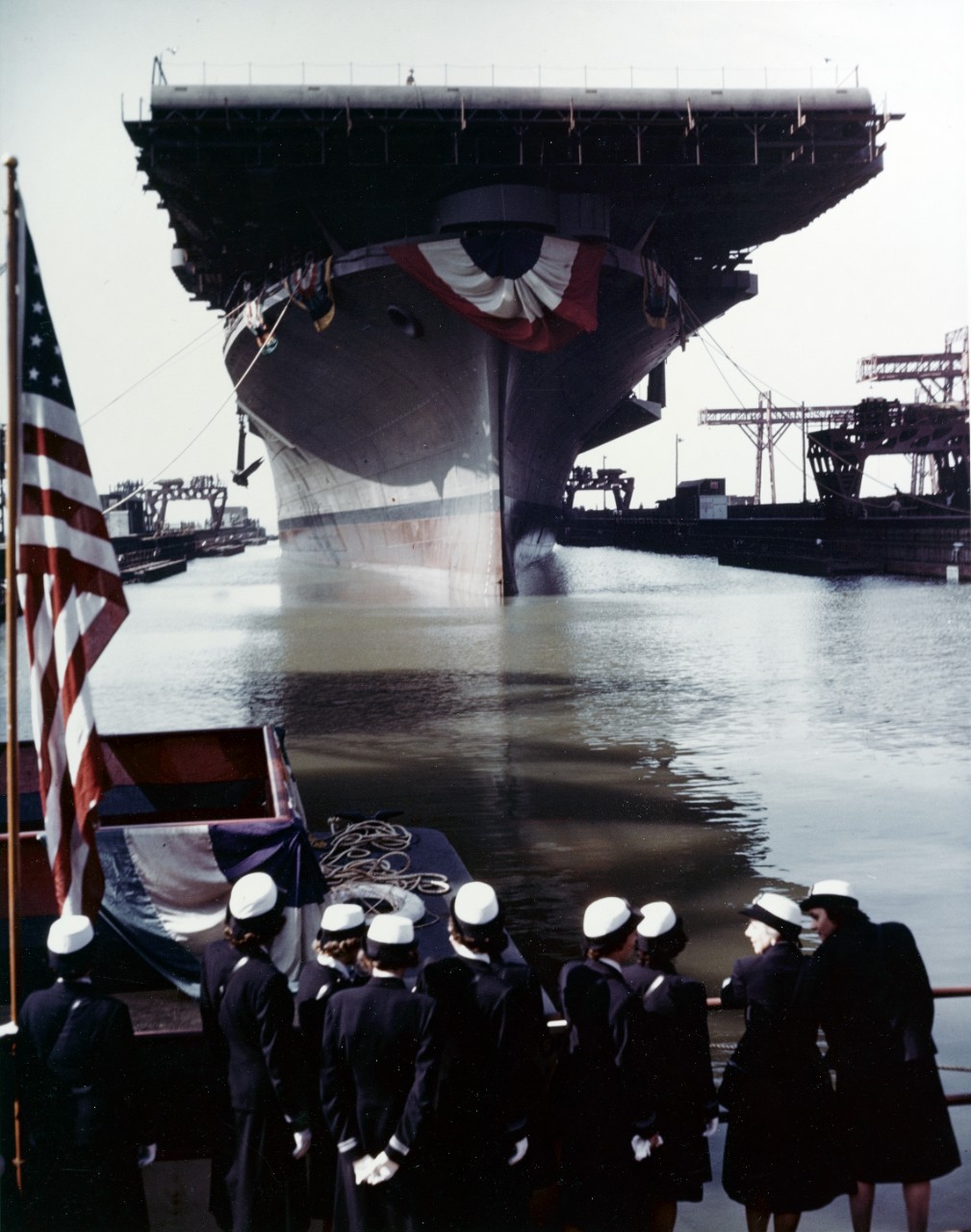
PCU USS Franklin (CV-13). The ship floated out of her building dock immediately after christening, at the Newport News Shipbuilding and Drydock Company shipyard, Newport News, Virginia, on 14 October 1943. 80-G-K-14015
The third USS Franklin was rushed to completion and commissioned just over three months later on 31 January 1944. Following a shakedown cruise, she crossed through the Panama Canal and reported for duty with TG 58.2 on 16 June 1944.
Quickly involved in the war, she supported the invasion of Saipan and of Peleliu, her planes raided Formosa and Okinawa, and by October she was taking part in the liberation of the Philippines which included the pivotal Battle of Leyte Gulf. In those not quite five months, her air group, CVG-12, logged 338 enemy planes damaged and/or destroyed, 409,500 tons of enemy shipping sunk and/or damaged, and 3,971 combat sorties flown.
It was on 30 October, just over a year past her launching, that Franklin encountered the Divine Wind off Samar Island.
As detailed by DANFS:
At 1405, VF-13 launched 12 Hellcats in response to an urgent request from a nearby fleet tanker that reported she was under attack by Japanese planes. Franklin’s crew went to general quarters and “no sooner had the fighters left the deck than Franklin was subjected to a bombing attack.” At the exact moment of the attack, the destroyer Bagley (DD-386) had been alongside Franklin taking on fuel, but quickly cast off. Six enemy planes identified as a mixture of Zekes and Yokosuka D4Y Suisei carrier bombers (Judys), came in at high speed “targeting the formation at about 3,000 feet.”
One of the planes, a Judy, “dove over Franklin,” just missing her starboard side, amidships. A Zeke, observed to still be carrying bombs then intentionally crashed into the carrier’s flight deck inboard of the No. 5 and No. 7, 5-inch mounts. A terrific explosion followed which caused a ferocious fire to sweep the nearby planes on the flight and hanger deck. A third low-flying plane attempted to bomb Franklin, but narrowly missed the carrier’s starboard side. The Japanese pilot then crashed his plane into the after portion of the Belleau Wood (CVL-24).
Two other Japanese planes crashed into the water as a result of errant suicide dives and a third one was shot down by Franklin’s gunners just as it was attempting to crash into Enterprise. Approximately 20 minutes after the attack on Franklin began additional fires broke out on the hanger deck and swept the second and third decks between frames 110 and 150. “All hands turned to,” and at about 1530 the flight deck fire was finally extinguished with the hanger deck fire lingering on until 1625. By 1800, all fires on board the carrier had been arrested with the exception of some that were still smoldering below decks. In total, casualties included 56 killed and 60 wounded.
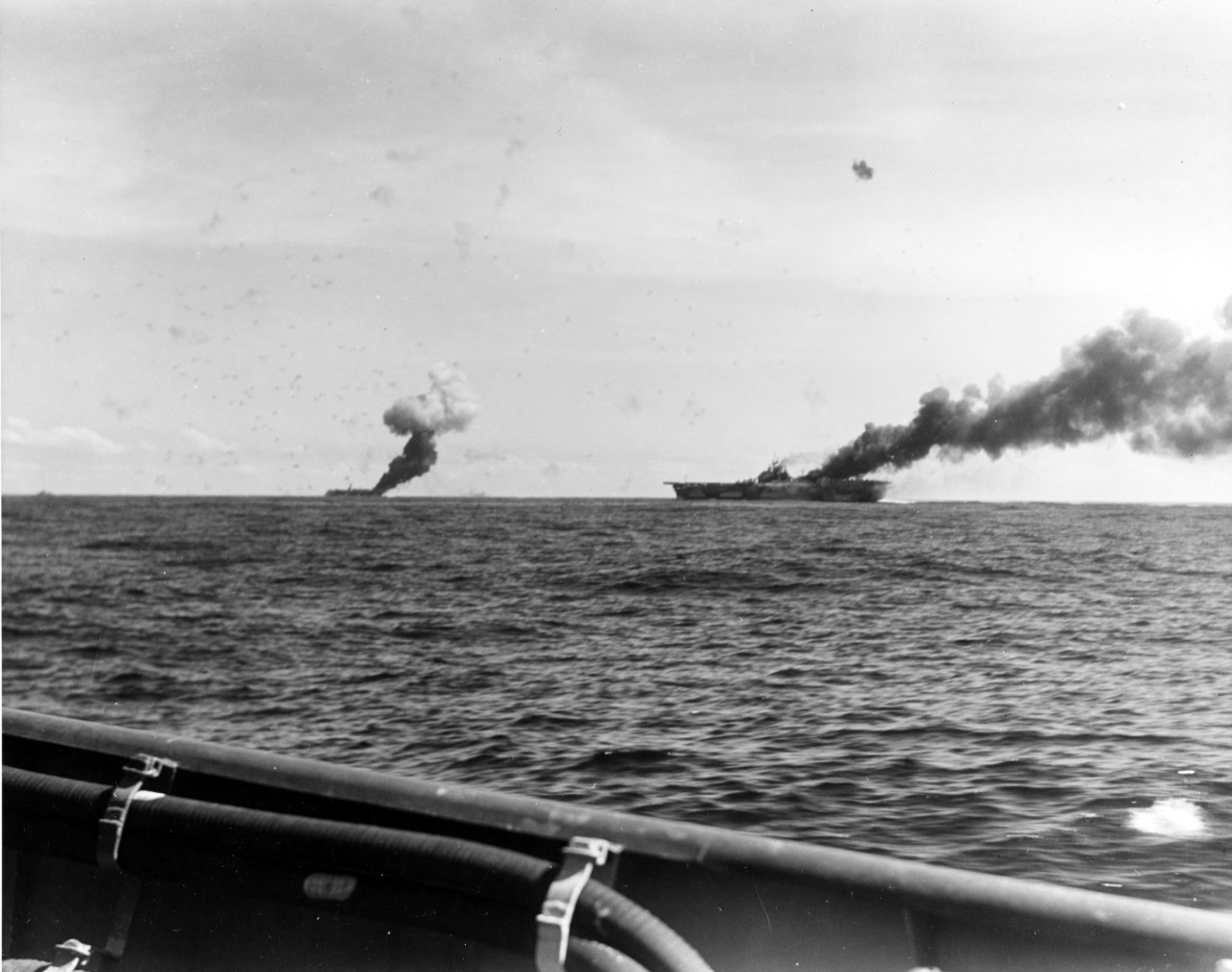
USS Franklin (CV-13), at right, and USS Belleau Wood (CVL-24) Afire after being hit by Japanese Kamikaze suicide planes, while operating off the Philippines on 30 October 1944. Photographed from USS Brush (DD-745. Note flak bursts over the ships. 80-G-326798
The damage was considerable and she made for Puget Sound Naval Yard via Ulithi and Pearl Harbor for repairs, knocking her out of the war for four months.
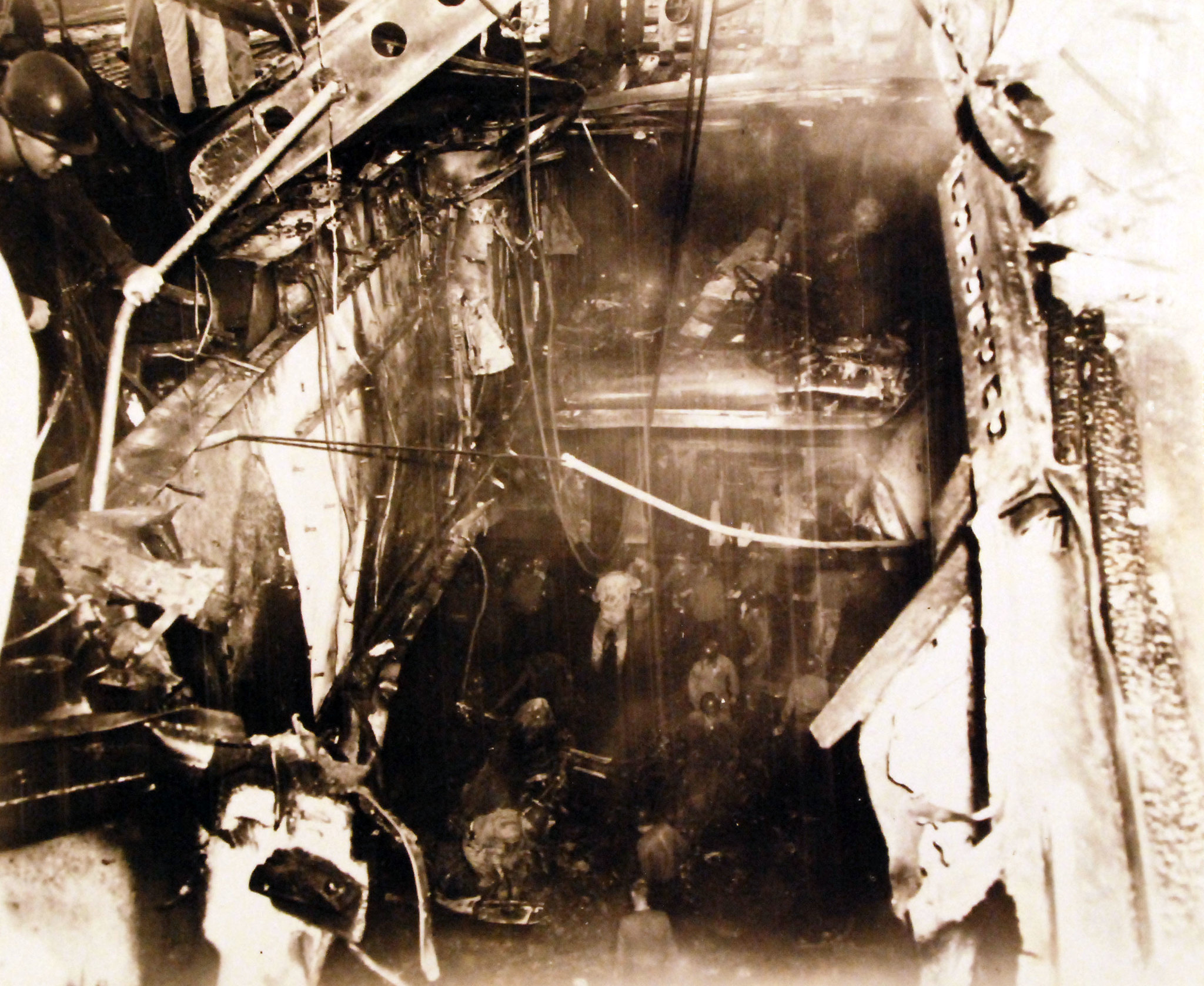
USS Franklin (CV 13), damage to flight deck following Japanese kamikaze attack on 30 October 1944. 80-G-270814
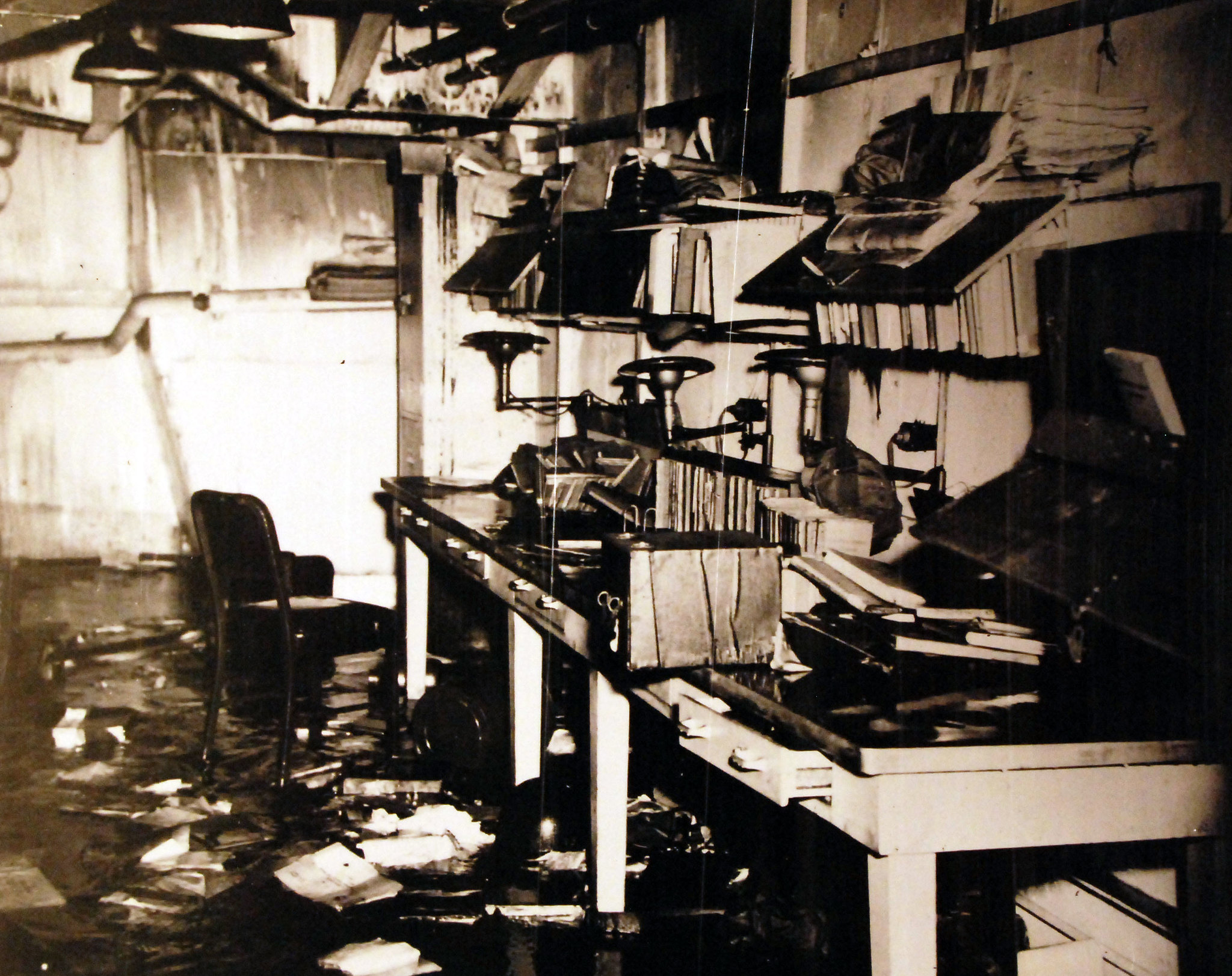
USS Franklin (CV 13), damage to V-2 spaces following Japanese kamikaze attack on 30 October 1944. 80-G-270811
Heading back West in March 1945 with Carrier Air Group 5 embarked, Franklin would suffer through her much more extensive and well-known brush with the kamikaze shortly after.
As for the good LCDR McAfee, she would leave the Navy in 1946 as a full captain, the WAVES growing to some 80,000 in number. She went on to return to the presidency of Wellesley College, sit on the board of a number of different corporations, and passed the bar in 1994, far outliving “Big Ben” which, laid up post-war, was quietly disposed of in 1966.